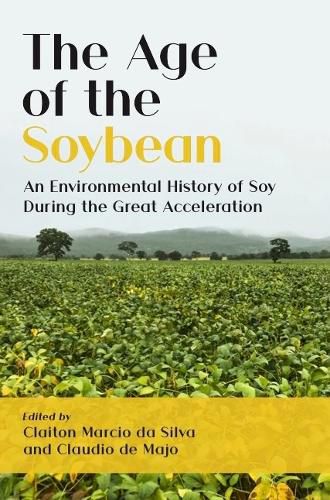Readings Newsletter
Become a Readings Member to make your shopping experience even easier.
Sign in or sign up for free!
You’re not far away from qualifying for FREE standard shipping within Australia
You’ve qualified for FREE standard shipping within Australia
The cart is loading…






This title is printed to order. This book may have been self-published. If so, we cannot guarantee the quality of the content. In the main most books will have gone through the editing process however some may not. We therefore suggest that you be aware of this before ordering this book. If in doubt check either the author or publisher’s details as we are unable to accept any returns unless they are faulty. Please contact us if you have any questions.
The soybean is far more than just a versatile crop whose derivates serve the protein needs of a meatless diet. One of the world’s most important commodities, soy represents the embodiment of mechanised industrial agriculture and is one of the main actors behind the socioeconomic, political and ecological transformations of industrial farming in several world regions. Despite the crop’s potential as a cheap source of vegetal protein for human consumers, most industrial soybean production has fuelled the global meat industrial complex, as animal feed. Soybean is thus, paradoxically, still a relatively ‘invisible’ crop to the public at large, although its global yields continue to increase at stupendous rates, lining the pockets of agribusiness and to the detriment of traditional agriculture. The transnational socio-ecological and economic entanglements characterising this versatile legume’s global expansion have prompted scholarly attention as researchers around the world have begun to unveil the main historical drivers behind the rise of the soybean in the global food chain. This book aims to expand the analysis, offering the most significant effort so far at an environmental history of soybeans. Interrogating the socioeconomic and ecological transformations determined by (and determining) the rise of soy in international food chains during the Great Acceleration, the volume gathers contributions from an international cast of researchers, working in numerous geographical contexts, from Japan and China, to India, African nations, the Southern Cone of Latin America, Northern Europe and the United States. Soybean farming, breeding, processing and marketing have bound together the histories of these diverse regions and altered beyond recognition their ecological and socio-economic contexts.
$9.00 standard shipping within Australia
FREE standard shipping within Australia for orders over $100.00
Express & International shipping calculated at checkout
This title is printed to order. This book may have been self-published. If so, we cannot guarantee the quality of the content. In the main most books will have gone through the editing process however some may not. We therefore suggest that you be aware of this before ordering this book. If in doubt check either the author or publisher’s details as we are unable to accept any returns unless they are faulty. Please contact us if you have any questions.
The soybean is far more than just a versatile crop whose derivates serve the protein needs of a meatless diet. One of the world’s most important commodities, soy represents the embodiment of mechanised industrial agriculture and is one of the main actors behind the socioeconomic, political and ecological transformations of industrial farming in several world regions. Despite the crop’s potential as a cheap source of vegetal protein for human consumers, most industrial soybean production has fuelled the global meat industrial complex, as animal feed. Soybean is thus, paradoxically, still a relatively ‘invisible’ crop to the public at large, although its global yields continue to increase at stupendous rates, lining the pockets of agribusiness and to the detriment of traditional agriculture. The transnational socio-ecological and economic entanglements characterising this versatile legume’s global expansion have prompted scholarly attention as researchers around the world have begun to unveil the main historical drivers behind the rise of the soybean in the global food chain. This book aims to expand the analysis, offering the most significant effort so far at an environmental history of soybeans. Interrogating the socioeconomic and ecological transformations determined by (and determining) the rise of soy in international food chains during the Great Acceleration, the volume gathers contributions from an international cast of researchers, working in numerous geographical contexts, from Japan and China, to India, African nations, the Southern Cone of Latin America, Northern Europe and the United States. Soybean farming, breeding, processing and marketing have bound together the histories of these diverse regions and altered beyond recognition their ecological and socio-economic contexts.